“The training I’ve had on piano sometimes gets in the way. On guitar, I don’t have that problem, ’cause I suck.”
Trent Reznor.
Well, I disagree. In fact, Trent Reznor is my favourite guitar player.
What do you think of that? He’s many great things to many people (not least a double Oscar-winning composer), but he never gets his dues as far as guitar playing goes.
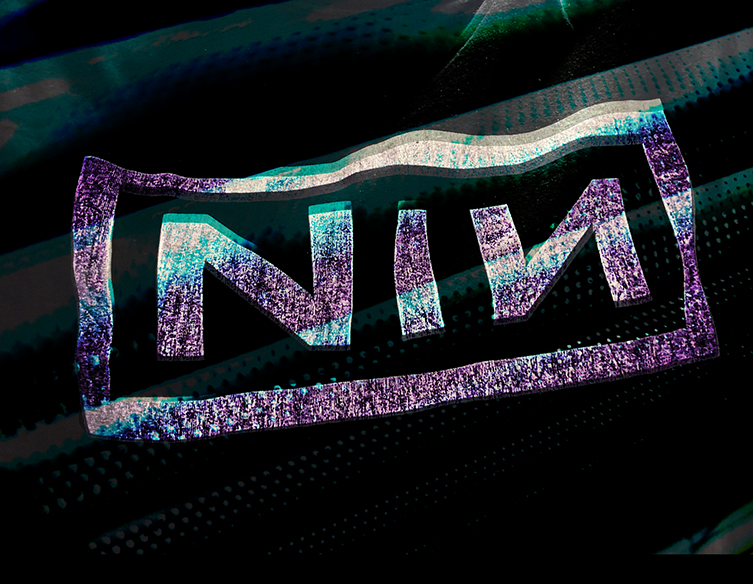
Maybe that’s because he has the excellent Robin Finck beside him to provide the live guitar performances of Nine Inch Nails, and perhaps because people don’t realise that 99.9% of the recorded guitar parts are by Trent?
I don’t know, but today I want to perform a deep dive into the world of Nine Inch Nails’ guitar sounds. It’s a highly unusual one, and definitely not one for traditional tonehounds. Trent is well known for his superior sound design, but it doesn’t mean that he holds reverence for accepted ideas of ‘great tone’. He seems to view guitars as simple tone making devices as much as a keyboard, a sampler or anything else: a means on which to create sounds, according to a bigger master plan.
Here’s something Trent told Guitar World magazine way back in 1994:
“Well, I'm not as intimidated by it as I was at one time. 'Cause I always thought I wasn't very good. So if I wrote a guitar part, I would say to myself, "Every guitar player in the world is going to hear this part and think, 'Here's a real easy, stupid part.'" But nowadays I just find the guitar much more expressive than the keyboard. Just because of the interface, obviously--strings and randomness. I find it interesting to sample sounds from a guitar track and then process them to the point where the performance has randomness and expression, and the sound becomes something completely new.”
I will check out the guitar gear used on some key NIN releases, and more significantly, some of the techniques and creative ways that guitars are employed throughout. I’ll see if we can uncover some tone secrets on the way, but the real story is in the methods. I want to talk to you about what Trent does with his guitar parts to make them sound as they do. I’ll try to prize out only the most fun and interesting things to tell you, and perhaps that can serve as a springboard for your own research and creation.
Okay, we have a lot to get through so let’s jump to it!
Contents
Trent’s 90s Guitar Signal Chain
Turbosynth, Other Software & Modern Equivalents
Techniques: The Guitar Approaches of Trent Reznor
Sampled Guitar, Played on Keyboard
Extreme Reverb for Infinite Guitar
Extreme Pitch Shifting and Reversing
Trent Reznor’s Guitars
- Overwhelmingly, it’s Gibson-style guitars
- Trent loves a thinline semi-acoustic
- The Parker Fly is a surprise hit
- He absolutely loves destroying guitars
Reznor is famously unimpressed with guitar culture. He claims not to be bothered about brands and models, seeing guitars as interfaces for making sound. Certainly, he processes his guitars so much that it’s often hard to know what’s being listened to, but still…I think the man doth protest too much!
Gibson ES-335 & Epiphone Sheraton
What do I mean? Well, check out almost any pic of NIN playing live from the last 28 years and Trent is overwhelmingly likely to be playing a Gibson or Epiphone guitar. He knows what he likes! His favourites seem to be an Epiphone Sheraton (with the headstock logo taped over) and a Gibson ES-335. Les Pauls get a big look in too (Robin also used to use these significantly), but not nearly as much as the semis.
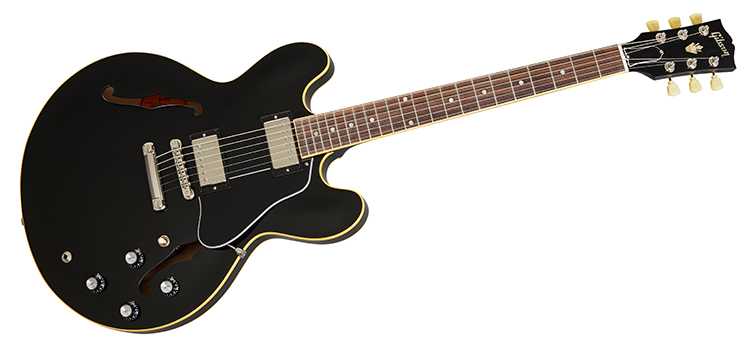
Why is the Epiphone logo taped over? I haven’t been able to find any details on that, but I do know that some years ago, a Gibson Trent Reznor signature guitar was being prepped for sale. It was a black (of course) ES-335 with trimmed down aesthetics, and Reznor seemingly pulled the plug at the last minute. In fact, here’s an interesting video on the very subject.
Les Pauls
Trent has played a wide selection of Gibson Les Pauls on stage, particularly during the Downward Spiral and Fragility tours. Several custom made Gibsons even had The Fragile’s album art on them, which would be real collector’s pieces today if most of them hadn’t ended up as firewood from being smashed to smithereens! Some did end up being auctioned off a few years back (and yes, not all of them were in one piece), so you’ll catch glimpses of them online if you look for them.
This attitude has led to Trent destroying a huge amount of guitars over the years onstage. My favourite quote from him regarding this has to be: "When an instrument fails on stage, it mocks you and must be destroyed".
He also seems to play both expensive and very cheap guitars, and does not always save the cheap ones for destruction, either! One case in point would be Billy Howerdel from A Perfect Circle's main guitar, a Les Paul Classic. Howerdel worked as a guitar tech for various bands including NIN before APC took off, and witnessed all manner of guitar smashing madness. Telling the story, he mentioned about making a ding on the surface of one of Trent’s Les Pauls. Another tech simply said, 'Dude, that's the least of your concerns. That is not a big deal compared to what's going to happen tonight.'
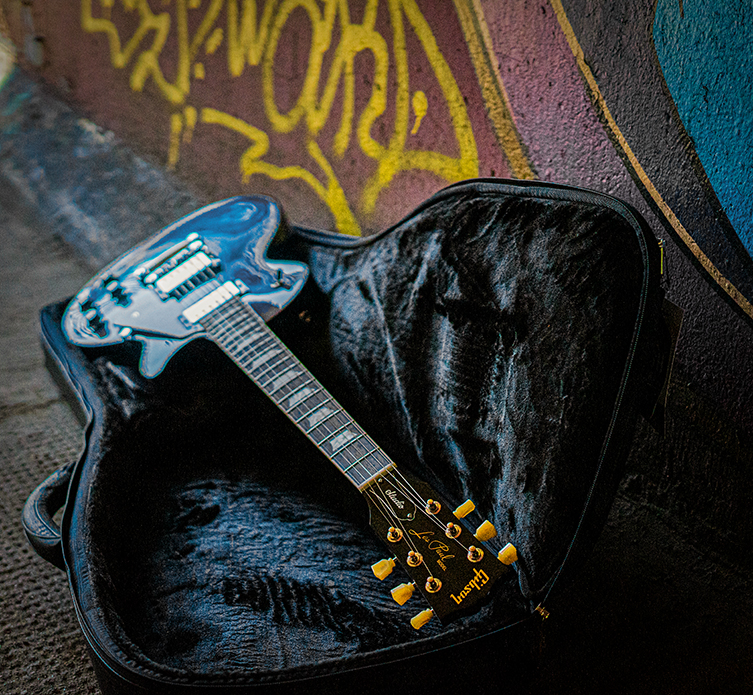
He wasn’t kidding either. That guitar got launched into the crowd and its head was ripped off. It was rescued, repaired, and thrown about some more. "That Nine Inch Nails tour, I went through 137 Les Pauls when I did the final count, and this was the number one of all of them. At the end of the tour Trent just says, 'Take two or three guitars with you, whatever you want.'" Howerdel took the Classic, and went on to make Mer De Noms and more with that Les Paul. Gibson, can we get a signature model of this one?
Strings and Picks
Both Trent and Robin seem to prefer lighter picks. Research shows that Trent is a .50mm ‘Tortex Red’ chap, which puts him squarely in the ‘rhythm player’ niche since those are waaay too flimsy for lead playing, aren’t they? I don’t know if he changes it up in the studio but I get the feeling he doesn’t.
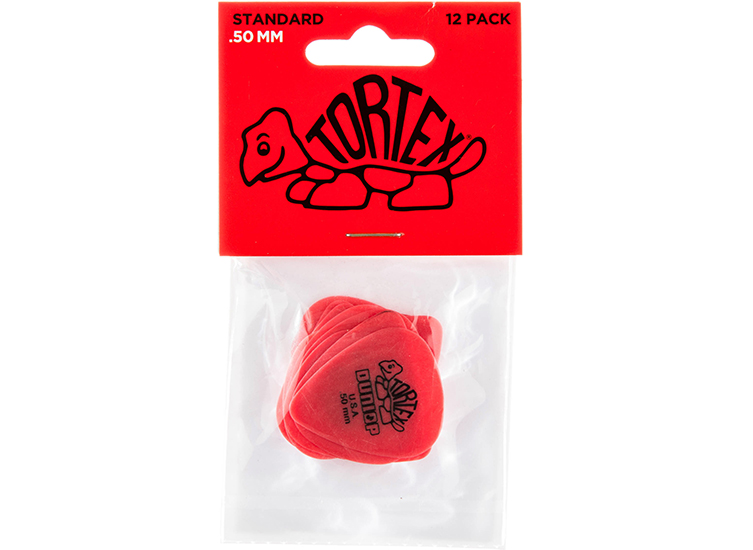
Robin, from the two conversations we’ve had, shared that he likes 11 gauge strings, which are on the heavy side for a lead guitarist, but his style is very physical. For picks, he loves the gold Herco style. Now, here’s something for you to know: Herco Flex picks are a little thicker than their names may suggest. A silver Herco Flex 75 pick is actually 1.01mm thick, and a gold Herco Flex 50 pick is .67mm thick!
So, Robin’s not using a .50mm pick, but one that’s in between a .60mm and a .73mm. Neither are heavy though, so if you want to get closer (sorry) to the NIN guitar style, then lose the heavy picks and go for something with more ‘give’ in it.
Parker Fly
When making The Fragile, Trent mentioned that a great deal of the guitar parts were actually a Parker Fly, recorded using the built-in piezo pickup. This is the quasi-acoustic pickup of course, designed to allow the player to approximate a plugged-in acoustic guitar without switching instruments mid-gig.
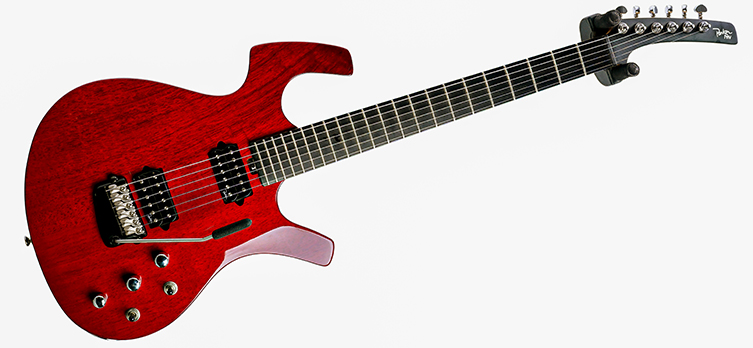
I’m not certain how it ended up sounding on the record. There are acoustic sounds for sure, but something tells me that Trent was mangling the Fly to make that piezo do something else.This makes it harder to identify the Fly on record, but with NIN, part of the fun is in the detective work! You can definitely hear it at the beginning of this track though:
There’s a chance that Reznor was turned on to Parker guitars by David Bowie’s guitarist Reeves Gabrels. Bowie and NIN toured together in the 90s and indeed performed together. Check out this beautiful version of Hurt, with Bowie leading the way on vocals and Gabrels adding an inspired (and creepy) lick with his Parker Nitefly.
To summarise, though, I’d say that any guitar with a bridge position humbucker is going to get you 90% there in terms of recreating NIN sounds from the guitar perspective. It’s all really about what Trent does to and with the guitars afterwards that makes it ‘NIN’, and that’s what the latter section of this blog is all about.
Indeed, here’s one example of his position of guitars and how they fit into his sonic universe:
“To be honest, I process the guitar tracks so much that it doesn't really matter what guitar I'm playing. Since the guitars are usually recorded into the computer we import them into the Turbosynth program, which totally turns them into other things.”
Still, let’s look at some of the devices that Reznor plugs his guitars into before they get mangled…
Trent’s 90s Guitar Signal Chain
In an attempt to get away from stereotypical ‘big rock’ guitar sounds (whilst also still wanting big rock guitar sounds…) Reznor used to eschew traditional amps in favour of rack gear. Recording direct rather than from micing amps in a room gave Reznor what he wanted to here, as he says from that 1994 GW interview:
“Almost everything was direct - there was almost no miking of cabinets. I just don't like that sound very much. It sounds boring to me. So we ran through a variety of preamps and speaker simulators. Our main preamp was the new Marshall JMP-1. But I didn't use the speaker simulator in it. I took the direct out of the Marshall into the Zoom 9030, employing just the speaker simulator on that.”
Let’s look into that chain briefly:
- Marshall JMP-1: a pretty normal valve preamp
- Zoom 9030: An early multi-FX/amp modeller, mentioned by Dave Gilmour in a recent video and so now selling for 8 times its value.
- NEVE Preamp: one of the best in the business, this desk adds tone for sure
- Turbosynth: Early modular software. Think along the lines of Native Instruments’ Reaktor for a similar idea today.
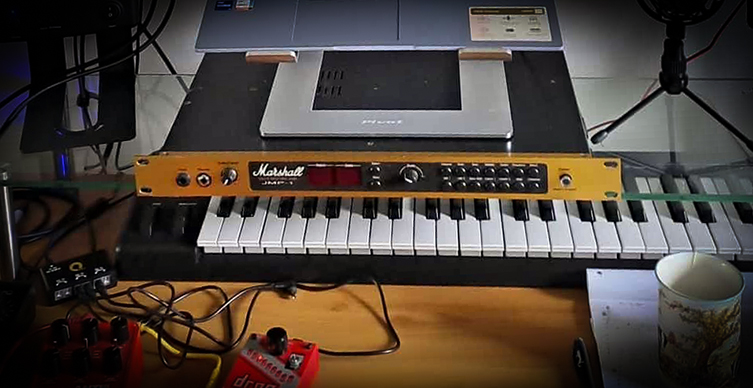
Not a straightforward signal chain at all! Nowadays, there are plugins to emulate all of this gear, so it’s actually relatively straightforward to get the tone of, say, Wish or Last by simply using emulations. I won’t name brands here because you’ll be familiar with what you like, but think along these lines:
- JMP emulator, get a typical distorted tone
- 9030 emulator, use the amp sim/IR part
- Find any plugin synth that offers Waveshaping. Waveshapers are like convolutions, EQ’ing the sound via its own parameters. This part is quite important for the sound.
- Finally, if you can get an EQ curve from the record itself, stick it on last. If not, let your ears be the judge, but definitely have an EQ at the end there.
That’s how to get that Broken guitar sound, but The Downward Spiral goes a little further into the oblique. Trent hired Adrian Belew to perform on a couple of tracks, and his unorthodox playing was made even more strange by the use of a ring modulator effect. Basically, try one and you’ll hear where it occurs on the album.
The Zoom Units
People do get caught up on the Zoom 9030 unit used by Trent, because they think the tone secrets all lie in one device. In truth, he used what he had available and was thinking creatively, so I’d perhaps advise you to do the same. Buying a 35 year old piece of Zoom gear on eBay is not likely to turn your home recordings into The Downward Spiral, let’s be honest!
But, since we are here to geek out on Reznor’s six string artistry, here are the units he’s known for using, right after his own take on them:
“I really like the sound of the speaker simulator on the Zoom, but I don't like the preamp section. It sounds like what it is: a little box. I also have a Demeter tube preamp that I used sometimes. That one was totally direct, no simulator. It's the ultimate terrible sound. But it works in the context of some of the songs. I also used some of the little Zoom 9002, the old one - the one that clips on your belt. I just used it straight. I like its sound sometimes.”
Zoom 9030: a ½ rack unit, complete multi-fx unit. Trent apparently used this for the amp sim only, as far as guitars go. He did also put a lot of the vocals through this box, so I recommend grabbing a plugin emulator and seeing what you can do with vocal tracks too!
Zoom 9002: A tiny portable multi-fx unit with headphone output. This is a practice tool with a number of presets and, as Reznor pointed out, a belt clip! If I’m not wrong, this is the Zoom which had his Ruiner guitar solo preset!!
“That's just a preset on the Zoom. I think I accidentally called up the wrong patch. I'm not a soloist. I was just laughing when I was playing with this ridiculous sound, recording into the computer saying like, "This is so cheesy," you know? I later realized that I basically tried to play a "Comfortably Numb" - type solo with this sound. I played the song for Chris, our drummer, and I was thinking, "He's going to start laughing. It's silly." But he goes, "Man, that guitar section was fucking great."”
This is a great example of Reznor’s guitar playing. It’s showing his massive Pink Floyd fan status (Uncomfortably Numb, anyone?), but instead of emulating David Gilmour, he has obliterated any trace of a ‘pleasant’ guitar sound and in doing so, created something special.
Turbosynth, Other Software & Modern Equivalents
So, there is a lot of talk about the Turbosynth in the earlier, gnarlier years of NIN. Turbosynth is/was a piece of software created by Digidesign that allowed you to build your own virtual modular instruments and effects inside the computer by combining ‘circuits’ of programs. It sounded like it was a relatively unpredictable piece of software, too…
“If you process the sound on the bridge pickup versus the neck pickup, it'll be totally different--not even remotely similar. Because the program finds certain frequencies that it accentuates and distorts. A lot of the sounds on "Mr. Self Destruct" that seem like guitar performances that no human being ever played are actually real performances that have been processed to unknown depths using Turbosynth.”
Reznor used the Turbosynth to sonically re-arrange and sculpt all and any pieces of audio at his disposal. This is partly why so many NIN guitar sounds are far from conventional, even 30+ years later!
Other software Trent used later on included the software version of the Access Virus and the Mutronics Mutator. He’s also regularly spotted using Ableton Live, and has championed Native Instruments plugins.
Going back to the Turbosynth, the concept has since moved into other software such as MAX Msp/Max for Live and Reaktor, which I mentioned earlier. Your imagination (and computer skills) are the limit to what you can achieve with these programs, because there are literally no rules. If you can think it, you can build it.
If you’re interested in nailing some of the more extreme NIN guitar sounds and aren’t getting what you want, it may be because you haven’t dived into this arena. In fact, Trent himself says a lot of what he does on the guitar is impossible to recreate because it mainly happens afterwards, in the processing. Keep this in mind if you’re having trouble!
Techniques: The Guitar Approaches of Trent Reznor
Now, this is where it all gets interesting. I’ll try to explain this stuff as best I can, but there’s a lot of info out there that tells conflicting stories about a lot of this. I’ll keep it as straight and true as I can, I’ll refer directly to Trent’s own words when possible, and I’ll encourage you to try out any of these ideas for yourself, to see how they might make your own recordings more interesting.
Sampled Guitar, Played on Keyboard
This first one is pretty simple. NIN often sample sections of guitar playing, spread the sample across a MIDI controller keyboard, and play parts that way. Four examples of this spring to mind straight away:
The Day the World Went Away: those crunching chords at the beginning are played on a keyboard. If it were on a guitar, you’d hear handling noise from fingers sliding across the strings from chord to chord. Even the sound itself seems to have a slight artificiality to it, which is one of the band’s hallmarks. It’s cool, because it’s pretty easy to just play this part on a guitar (as they do live) but it wouldn’t - doesn’t - sound quite the same.
Gave Up: The two-note riff during the verse is a sampled guitar part played from a keyboard. You can actually see this in the Broken EP video.
Actually, this happens often in NIN’s music, where a repeating part is triggered rather than physically performed on a guitar. Note the cool sleazy guitar lick in Reptile, and consider how exact it is each time it occurs. That’s been sampled and triggered, and it sounds awesome.
Pinion: One of my favourite NIN ‘guitar parts’, Pinion is an instrumental that the band normally use at the beginning of shows. The ascending guitar part is actually (I’m pretty sure about this) a sample of Robert Fripp’s guitar playing from David Bowie’s Scary Monsters album. I think it’s a one note sample, played ascendingly on the keys. How can such a simple piece of music and sound design come across as so alienating and threatening?
Tune the Guitar to One Note
I’ve heard this discussed on a number of occasions: with March of the Pigs, We’re in This Together, and much of Reznor’s latter period guitar playing. Those big swarms of sound that come in like hurricanes? It's a bunch of guitars tuned to the same note.
This ‘guitar army’ sound actually makes a lot of sense when you consider that he’s a synth player first and foremost. What he does here is the same as what you’d do on an analog synth: layering up multiple waveforms with just a little bit of detune applied to thicken up the sound. Of course, the ‘slight detune’ happens naturally with guitars.
Extreme Reverb for Infinite Guitar
Building on the previous technique, Reznor often takes his guitar that’s tuned to a single note, and plays parts on it with a huge reverb setting. The reverb is at ‘100% wet’, so none of the original guitar signal makes it through to the recording. It’s like a ghost of the guitar part, and when layered up, it can sound particularly haunting.
Reznor spoke about that - and the Parker Fly - in an interview he conducted back in 2000:
“I’d say 80 percent of the guitar parts on the record (The Fragile) were done with a Parker guitar. I used the piezo pickup on the Parker quite a bit. One of the tricks we’d use on this record was tuning all the guitar strings to the same pitch: two low octaves, two middle and two high. Then I’d strum as fast as I could, playing a melody with one finger up and down the neck. We’d run that through a Yamaha SPX1000 with early reflection reverb on. You’re not hearing the strings, but you’re hearing the pitch, and it has an infinite reverb type sound, but it’s not sustaining like a room reverb.”
There are lots of examples of this in The Fragile, but I also think it's what makes up the backing chords for A Warm Place. A casual listen would have you thinking that it’s keyboard pads, but I think those are all guitars. Have a listen…
Extreme Pitch Shifting and Reversing
When I first read about this technique, it absolutely blew my mind. Now, I know that you and I in 2025 can easily go into Ableton Live right now and try this out on Sampler or whatever, but consider this in 1993, in a world that was ‘pre-everything’. Consider even coming up with the concept I’m about to tell you about…
Okay, this is for songs like Mr Self Destruct, Suck and a bunch of others. To get a sound that behaves kind of impossibly, Trent would do the following:
“Another thing I'll sometimes do is play the guitars twice as fast as the song's tempo, recording them at 30 inches-per-second on the multitrack. Then I'll slow it down to 15 ips. I'll play the part an octave high, too, so when I slow it down, it's in the right register and at the right speed. But if you saturate the tape real hard when you record it at 30 ips, it takes on a really clear, thick, warm, and bizarre quality when you slow it down. The guitar on Suck - which I think is the best guitar sound I've ever gotten -was done that way.”
To the casual listener, it’s just a very cool big distorted guitar, but now that you are deep into this with me, you are a Trent connoisseur and should give it a listen with critical, appraising ears:
21st Century Guitar Playing
I feel that it’s really good to throw light on a guitarist as unorthodox as Trent Reznor. Given that we are in the year 2025, a lot of the guitar playing fraternity is still obsessed with the 1960s and whilst I also have favourites from back then, I love to see and hear people pushing forwards, being creative and inventing new places for the guitar to go.
What’s crazy is that Trent and his NIN cohorts were doing this three decades ago! It all still feels really fresh and futuristic, because not many artists have followed that path.
Well, I should maybe clarify and say that not many artists have followed that path well, or successfully. It's a difficult thing to be a trailblazer, but I think Reznor’s irreverent attitude towards guitar playing is what has saved his music from ever becoming out of date or retro.
What do you think? Even if you’re not a fan of the music, were you inspired by some of the techniques and practices highlighted today? Has it made you look at guitar playing in a different light? Maybe you’ll go back to your own setup and see how you can approach it in a fresh way. If you do that, I hope you discover something new and amazing, and I hope you have loads of fun! In the meantime, click below to read my two exclusive conversations with NIN's iconic guitarist Robin Finck!
Read my EXCLUSIVE Robin FInck Interview about his gear, his inspirations and influences

